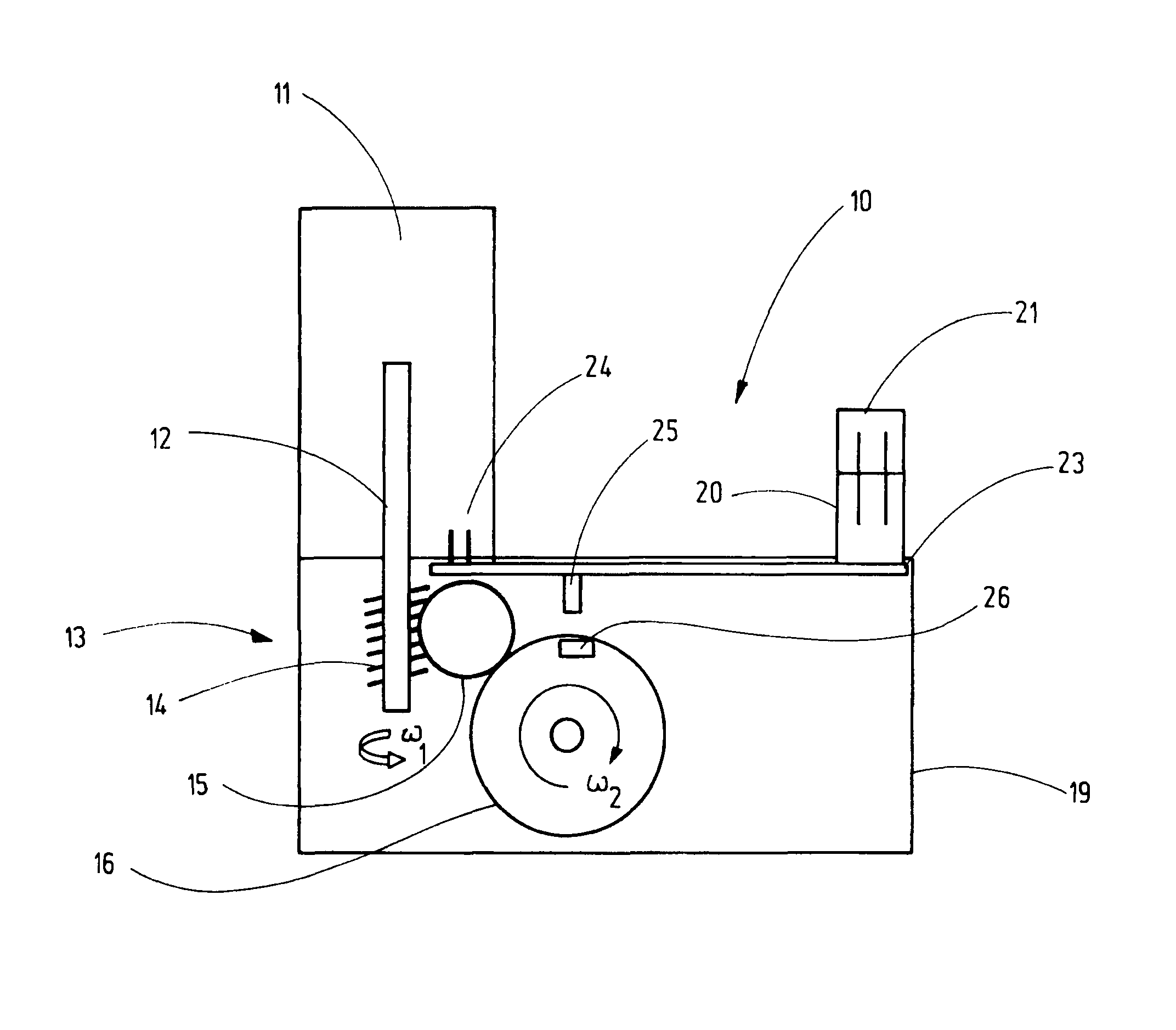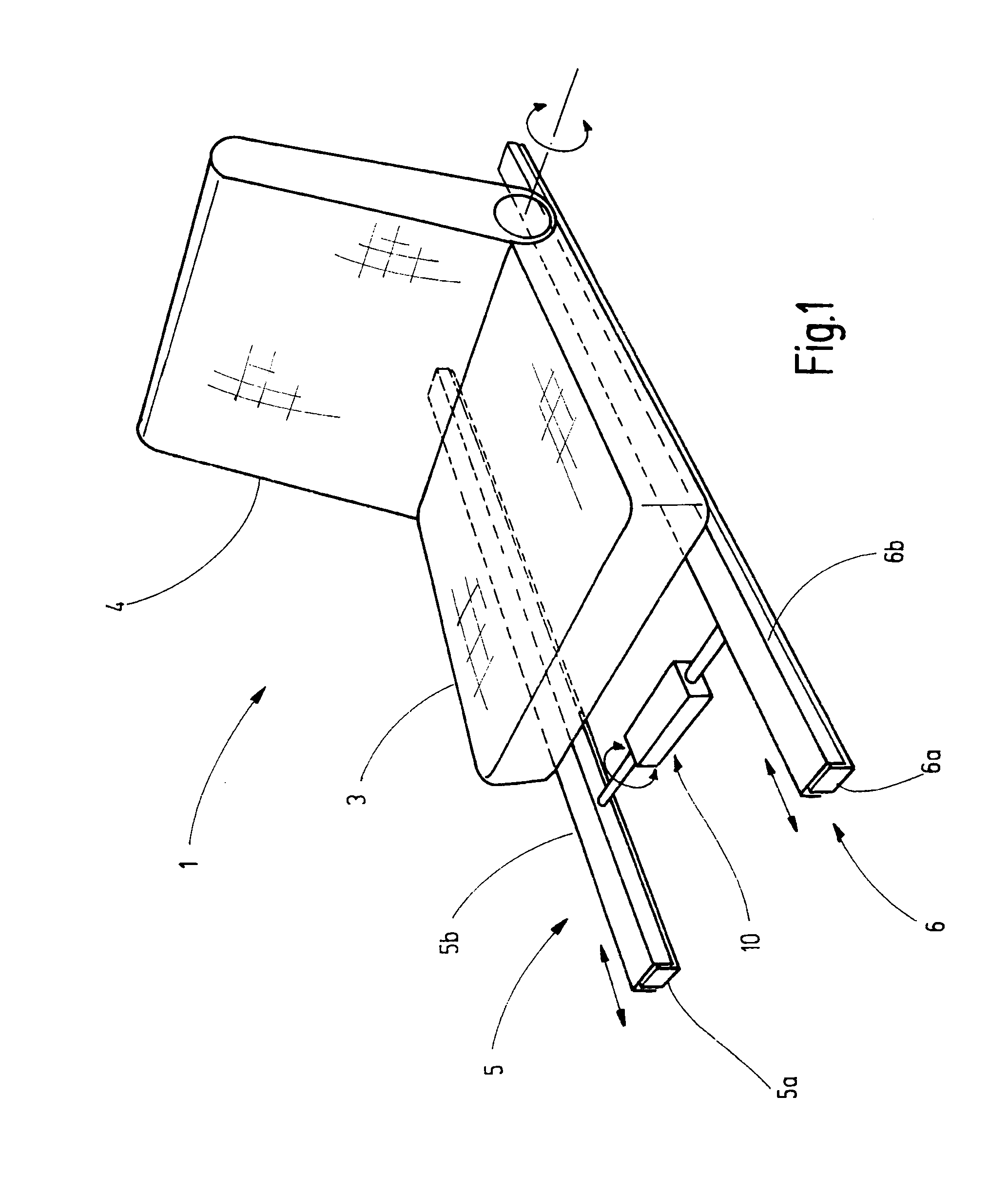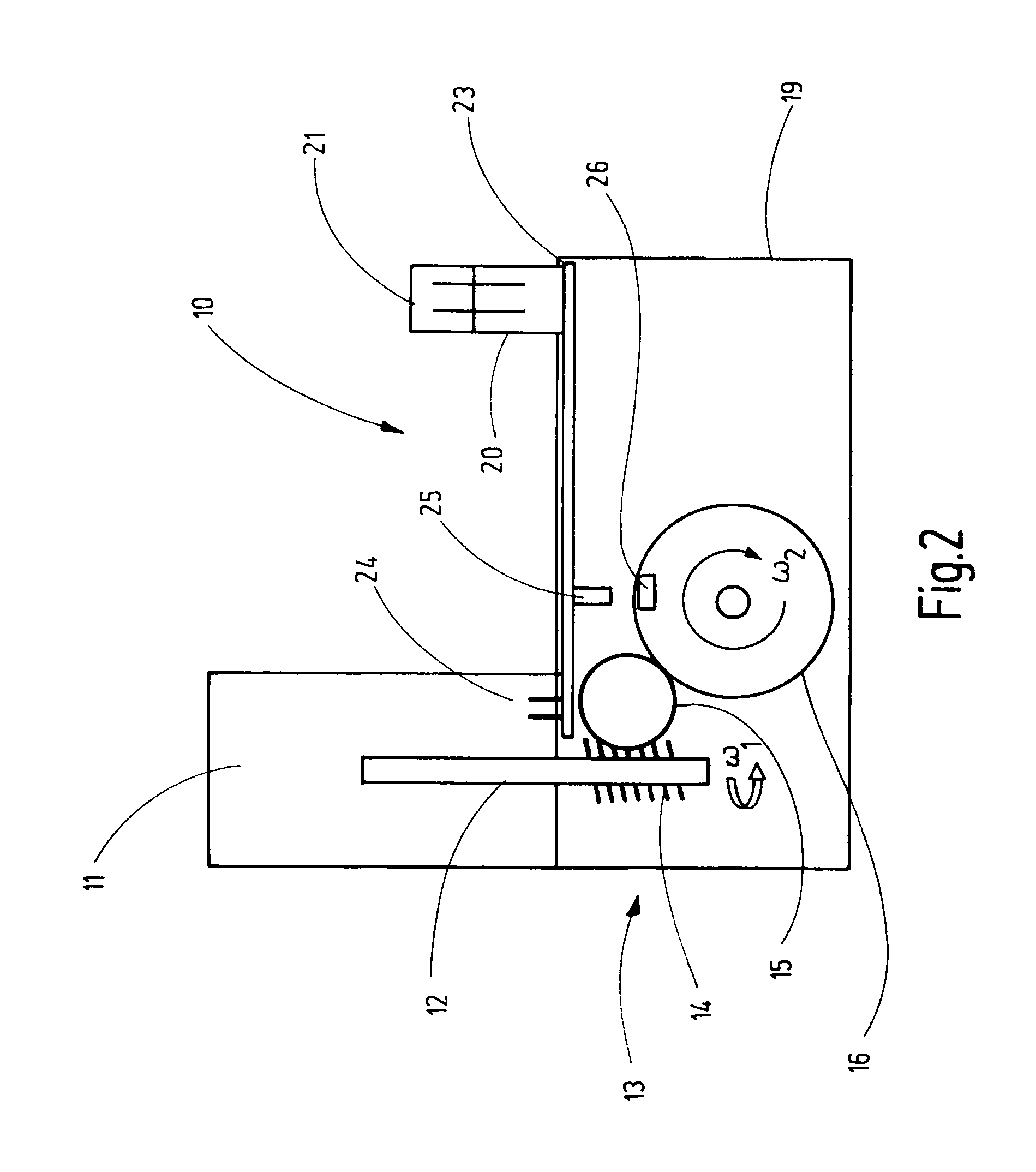Seat adjusting device
a technology of seat and adjusting device, which is applied in the direction of motor/generator/converter stopper, dynamo-electric converter control, instruments, etc., can solve the problems of large amount of data to be processed, large number of different electric motors, and high cost, so as to reduce the rotation speed, reduce the scanning frequency, and reduce the rotation speed
- Summary
- Abstract
- Description
- Claims
- Application Information
AI Technical Summary
Benefits of technology
Problems solved by technology
Method used
Image
Examples
Embodiment Construction
[0021]An automobile seat 1 of a motor vehicle has a seat pan part 3 and a backrest 4, which is arranged by means of two fittings laterally on the seat pan part 3, is swivelable relative thereto and is able to be locked with different inclination settings. The alignment of the automobile seat 1 in the motor vehicle and its usual travel direction on the one hand and the symmetry and arrangement of the fittings in the automobile seat 1 on the other hand define the direction indications which are used. The automobile seat is constructed as a seat with integrated seatbelt, i.e. the upper end of a safety belt is fastened to the backrest 4, more precisely to an automatic belt retraction device on the upper edge of the backrest.
[0022]For the longitudinal displacement of the seat, the latter is arranged with its seat pan part 3 on two seat track pairs 5, 6 aligned parallel to each other at a distance. Each seat track pair 5, 6 has a lower track 5a, 6a fastened on the automobile floor, and an...
PUM
 Login to View More
Login to View More Abstract
Description
Claims
Application Information
 Login to View More
Login to View More - R&D
- Intellectual Property
- Life Sciences
- Materials
- Tech Scout
- Unparalleled Data Quality
- Higher Quality Content
- 60% Fewer Hallucinations
Browse by: Latest US Patents, China's latest patents, Technical Efficacy Thesaurus, Application Domain, Technology Topic, Popular Technical Reports.
© 2025 PatSnap. All rights reserved.Legal|Privacy policy|Modern Slavery Act Transparency Statement|Sitemap|About US| Contact US: help@patsnap.com



